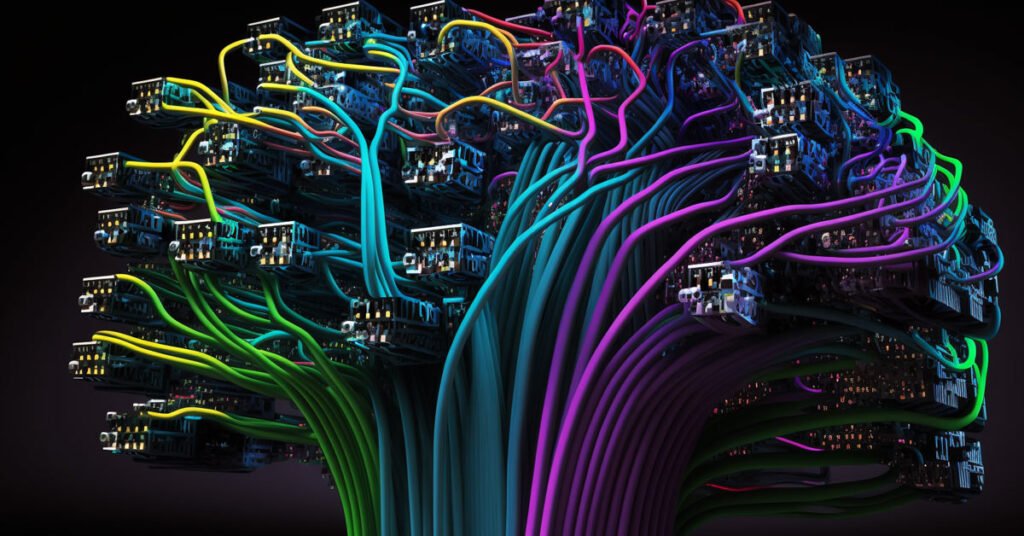Deep learning is a subfield of machine learning that focuses on algorithms inspired by the structure and function of the human brain, known as artificial neural networks. This article will provide a comprehensive overview of deep learning and neural networks, including their history, key concepts, architectures, and applications.
Table of Contents
- 1. Introduction to Deep Learning
- 2. Neural Networks
- 3. Key Concepts in Deep Learning
- 4. Popular Deep Learning Frameworks
- 5. Applications of Deep Learning
- 6. Challenges and Future Directions
1. Introduction to Deep Learning
Deep learning is a rapidly evolving subfield of machine learning that focuses on modeling high-level abstractions in data using multiple layers of artificial neural networks. These networks are capable of learning complex patterns and representations from large datasets, making them highly effective in a wide range of applications.
2. Neural Networks
2.1 Structure of Neural Networks
Artificial neural networks are composed of interconnected layers of nodes, or neurons, which process information and pass it through the network. The structure of a neural network typically includes:
- Input layer: The first layer of the network, which receives input data.
- Neurons: Nodes in the input layer that represent individual features of the input data.
- Hidden layers: Layers between the input and output layers where the majority of computation occurs.
- Neurons: Nodes in the hidden layers that learn to represent and process data by combining and transforming input from previous layers.
- Output layer: The final layer of the network, which produces the desired output.
- Neurons: Nodes in the output layer that provide the final prediction or classification.
2.2 Types of Neural Networks
There are several types of neural networks, each designed to tackle specific types of problems:
- Feedforward Neural Networks (FNN): The simplest type of neural network, where information flows in one direction from input to output, without looping back.
- Convolutional Neural Networks (CNN): Networks designed to process grid-like data, such as images and audio signals, using convolutional layers to detect local patterns.
- Recurrent Neural Networks (RNN): Networks that process sequences of data by maintaining a hidden state that captures information from previous time steps, allowing them to model temporal relationships.
- Long Short-Term Memory (LSTM) Networks: A type of RNN specifically designed to overcome the vanishing gradient problem, enabling them to learn longer-term dependencies.
- Generative Adversarial Networks (GAN): Networks composed of two components, a generator and a discriminator, that are trained together in a process that allows the generator to produce realistic samples from the learned distribution.
3. Key Concepts in Deep Learning
3.1 Activation Functions
Activation functions introduce non-linearity into neural networks, allowing them to learn complex patterns and relationships in data. Some common activation functions include:
- Sigmoid: A smooth, S-shaped function that maps input values to the range (0, 1), often used for binary classification tasks.
- Tanh: Similar to the sigmoid function, but with output values in the range (-1, 1), providing a zero-centered output.
- ReLU (Rectified Linear Unit): A piecewise linear function that outputs the input value if it is positive and zero otherwise, providing a computationally efficient non-linearity.
- Leaky ReLU: A variation of the ReLU function that allows a small, non-zero output for negative input values, helping to mitigate the “dying ReLU” problem.
3.2 Loss Functions
Loss functions measure the difference between the predicted output and the actual target, guiding the learning process. Common loss functions include:
- Mean Squared Error (MSE): Measures the average squared difference between the predicted and actual values, commonly used for regression tasks.
- Cross-Entropy Loss: Measures the difference between two probability distributions, often used for multi-class classification tasks.
- Binary Cross-Entropy Loss: A special case of cross-entropy loss for binary classification problems.
- Hinge Loss: A loss function used for training support vector machines and often employed in multi-class classification tasks.
3.3 Optimization Algorithms
Optimization algorithms minimize the loss function by iteratively updating the weights of the neural network. Some widely used optimization algorithms are:
- Gradient Descent: A first-order optimization algorithm that adjusts weights based on the gradient of the loss function.
- Stochastic Gradient Descent (SGD): A variation of gradient descent that uses a randomly selected subset of the data (mini-batch) for each update, providing faster convergence.
- Momentum: An extension of SGD that adds a momentum term to the update rule, helping to accelerate convergence and reduce oscillations.
- Adam (Adaptive Moment Estimation): A popular optimization algorithm that combines the ideas of momentum and adaptive learning rates for faster convergence.
3.4 Regularization Techniques
Regularization techniques prevent overfitting by adding constraints to the model complexity. Some common regularization techniques include:
- L1 and L2 regularization: Add penalty terms to the loss function based on the magnitude of the weights (L1) or the square of the weights (L2).
- Dropout: Randomly sets a fraction of the neurons in a layer to zero during training, forcing the network to learn redundant representations and improving generalization.
- Batch Normalization: Normalizes the inputs to each layer using the mean and standard deviation of the batch, helping to stabilize training and improve convergence.
4. Popular Deep Learning Frameworks
Several open-source deep learning frameworks have been developed to facilitate the implementation, training, and deployment of neural networks:
- TensorFlow: Developed by Google, TensorFlow is a widely-used framework that supports various types of neural networks and offers strong support for distributed computing.
- Keras: A high-level deep learning library built on top of TensorFlow, providing an easy-to-use interface for designing and training neural networks.
- PyTorch: Developed by Facebook, PyTorch is a popular framework known for its dynamic computation graph and ease of debugging.
- MXNet: A flexible deep learning library that supports both imperative and symbolic programming, allowing for faster prototyping and efficient distributed training.
5. Applications of Deep Learning
Deep learning has been successfully applied to a wide range of tasks, including:
- Image recognition and classification: Identifying and categorizing objects within images.
- Natural language processing: Understanding and generating human language, including machine translation, sentiment analysis, and summarization.
- Speech recognition: Converting spoken language into text.
- Reinforcement learning: Training agents to make decisions and perform actions in complex environments.
- Generative modeling: Producing new, realistic samples from a learned distribution, such as generating images, text, or audio.
- Drug discovery: Predicting the properties of molecules and identifying potential drug candidates.
- Anomaly detection: Identifying unusual patterns or outliers in data, often used for fraud detection and quality control.
- Recommendation systems: Suggesting relevant items or content based on user preferences and behavior.
6. Challenges and Future Directions
Despite its successes, deep learning still faces several challenges and open questions:
- Interpretability: Neural networks are often seen as “black boxes,” with limited understanding of how they reach their decisions. Developing methods to explain and interpret their internal workings remains an active area of research.
- Data and compute requirements: Deep learning models often require large amounts of data and computational resources, which can limit their applicability to certain tasks and environments.
- Adversarial attacks: Neural networks are vulnerable to adversarial examples, which are inputs designed to fool the model into making incorrect predictions. Developing robust defenses against these attacks is an ongoing research effort.
- Transfer learning and domain adaptation: Improving the ability of deep learning models to generalize to new tasks or domains with limited data is a key challenge for future research.
- Ethics and fairness: Ensuring that deep learning models are fair, unbiased, and respect privacy is critical as these technologies become increasingly prevalent in society.
As deep learning continues to advance, it is likely that new architectures, techniques, and applications will emerge, further expanding the impact of this powerful technology on various industries and aspects of human life.
- Whispers from the Dark - April 19, 2023
- Pablo’s story - April 18, 2023
- Sightings of a Skunk Ape - April 18, 2023



